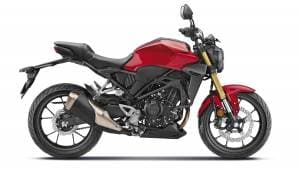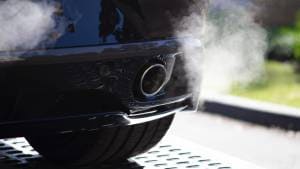Everything you need to know about BSVI
As most of you are aware, from April 1, 2020, the sale or even registration of non-BSVI (BS6) compliant vehicles will not be permitted by the Government of India and the norms apply not just to four-wheelers but also heavy duty vehicles, as well as two and three-wheeled ones. While the standards for all vehicles is now more or less in accordance with the European Union's Euro-VI norms, three-wheelers are still not near European levels, but the emission standards for them have been made fairly stringent too.

India is one of the very few (according to some reports the only one) countries that have jumped straight from BSIV (which only became mandatory all over India in April 2017) to BSVI. We have skipped the BSV stage entirely, and gone straight from BSIV to BSVI in a period of just three years! So the move to BSVI is certainly a huge and significant one because of the short time in which it has happened and also due to the many changes in the use of technology in vehicles, and also the difference and advancement in the refining process of both petrol and diesel fuels. Given the rising pollutions levels all over India and the urgent need to rein in vehicle emissions, the move to BSVI may be the right one, but it's bound to increase the running and ownership costs of vehicles. Simply because the upgraded technology does not come cheap and at some point, the oil companies are also bound to pass on to customers at least some of the additional costs of refining and making the cleaner BSVI level fuel.
But leapfrogging to BSVI will hopefully also have its benefits, because these norms are far stricter and incorporate lots more emission reduction measures than that found in BSIII and BSIV. One of the biggest changes is the tightening of particulate matter (PM) mass emission limits and the introduction of particle number (PN) limits for diesel-powered vehicles. To achieve the prescribed level, most if not all, manufacturers of diesel vehicles will now have to go in for diesel particulate filters (DPF) to control PM emissions. A DPF is one of the best and most modern technologies to capture and store exhaust soot, which would otherwise be emitted from the tailpipe into the atmosphere. What is particularly praiseworthy is that this BSVI rule that severely tightens PM (Particulate Matter) and PN (Particle Number) emission limits also extends to heavy commercial diesel vehicles, including trucks and buses, which are amongst the biggest polluters on our roads. If these vehicles are to actually function within the specified norms, then they will have to be fitted with DPF systems that have proven so effective in Europe in controlling the PM (Particulate Matter) and PN (Particle Number) emissions. If executed properly, BSVI could actually contribute significantly in controlling the emission levels and reducing pollution on our roads and highways.
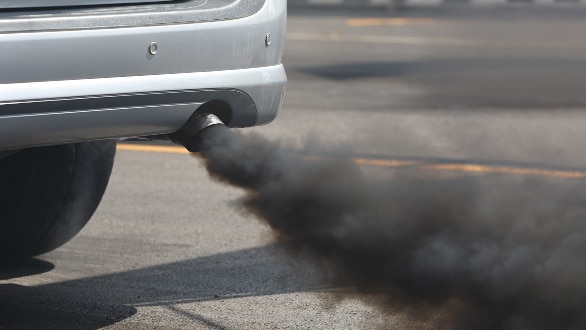
Another most important difference is how the BSVI regulation includes provisions for in-service conformity testing using portable emissions measurement systems (PEMS). What this actually means is that the regulatory authorities or testing agency will randomly pick up three vehicles of a particular model that have done between 15,000 and one lakh kilometres (and are between six months and five years old) from customers, and these vehicles will then be tested to check if they are meeting the homologated norms. This will help to ensure that emissions performance demonstrated in laboratory testing is also maintained under real-world driving conditions. What it shall hopefully ensure is that vehicles don't just meet the emission norms when they roll out from a showroom, but also after they have seen usage of upto one lakh kilometres. This means the manufacturer needs to focus that much more on quality, durability and performance, despite the ageing of their products. But what is still not very clear to me is what happens if these vehicles fail to meet the norms. Also what do you do after the vehicle has crossed the one lakh kilometre mark, which all commercial vehicles will do fairly quickly? Do you scrap them? Do they have to go for an engine and exhaust (and emission treatment) rebuild and overhaul, etc? This like several other factors will need to be looked into in the coming months.
Until now, two-wheelers have generally been dealt with a bit more liberally on emission controls. But the BSVI norms specify first-ever on-board diagnostic (OBD) system requirements for two and three-wheeled vehicles too. In fact the emission norms for two-wheelers also include the introduction of emission limits on nitrogen oxide (NOx), carbon monoxide (CO), and hydrocarbon (HC). In fact the emission limits for two-wheelers is said to be equivalent to those of petrol-powered passenger cars, and the authorities are optimistic that this will ensure that BSVI two-wheelers are as clean as BSVI petrol passenger vehicles on a per-kilometre-covered basis.
Of course all this is only possible if the fuel available is also BSVI compliant. The sulphur content in the BSIV level petrol and diesel we are presently using, is 50ppm (parts per million). But in the BSVI fuel, the sulphur level will be reduced very substantially to 10ppm! In fact this is the maximum permitted sulphur amount. To achieve this and make the BSVI level compliant fuel, the oil companies have had to spend about Rs 30,000 crores on upgrading their refineries. At some point they will have to pass on this expense to consumers, so BSVI fuel could cost more.
Earlier when BSIII and BSIV were introduced, some exceptions in quality of fuel, the cetane number, etc, were made for fuel supplied in the hilly North Eastern States or the higher reaches of Ladakh and Himachal. But now no such exceptions can be made, and sooner than later, the same type and quality of fuel will have to be made available everywhere to drive BSVI compliant engines, particularly the diesel ones which will not function satisfactorily on fuel with more sulphur content. Interestingly, just recently the Union Home Minister Amit Shah launched special winter-grade diesel for the high altitude regions of Ladakh. In winter, the temperatures here drop down to minus 30 degrees centigrade and below, and motorists have for long faced problems of diesel freezing in the tank and fuel lines. Apparently the winter-grade diesel has been developed by the Indian Oil Corporation Limited (IOCL) to address this problem and it also meets BIS specification of BSVI grade.
Can BSVI vehicles run on BSIV Fuel?
The BSVI level fuel is already available in Delhi and the NCR region, and the government is confident that in a few months you will get it all over the country. The Minister of Petroleum and Natural Gas Dharmendra Pradhan, has also committed that BSVI fuel will be made available all across India from April 1, 2020, the day on which sales and registration of non BSVI vehicles will be completely banned.
This better be true, because it's not all advisable to run diesel-powered BSVI vehicles on BSIV fuel, which has higher sulphur content. The BSVI diesel engines need to have exhaust after treatment measures like diesel particulate filters (DPF), or LNT (Lean NOx Trap), SCR (Selective Catalytic Reduction), etc, and the BSIV fuel can cause serious damage to these expensive emission control components. It will of course also result in higher than permitted emissions. But some manufacturers say that they have prepared for this and their engines, even the diesel ones can run on BSVI fuel. In any case, my advice is that you double check on this and only fill BSIV fuel in your BSVI compliant diesel vehicle, once you have been given an assurance by the manufacturer that it is okay to do so.
Where petrol engines are concerned, there is no such criticality. Most manufacturers say that BSVI petrol vehicles can easily be run on BSIV fuel and will not face any major problems. But the engine oils are different so one should ensure that their BSVI compliant vehicle, whether petrol or diesel, should only be lubricated by BSVI compliant oils.
Can BSIV vehicles run on BSVI Fuel?
It's important to understand that while the sale of all BSIV vehicles will be stopped from April 1, 2020, there is no restriction whatsoever on their use and one can legally continue driving them. So whether it is BSII, BSIII or BSIV, these vehicles will continue to be used all over India until at least we have a proper scrapping policy or rules specifying the phasing out of old cars, like we do in the NCR region, where they have banned the use of diesel vehicles more than 10 years old and petrol vehicle more than 15 years. In fact even if you buy a BSIV vehicle in the NCR today, you can confidently use the diesel one for the next 10 years and petrol-powered one for 15 years.
Given this, the government will keep supplying BSIV fuel all across the country too. But just in case it's not available, don't worry, because you can drive your BSIV petrol or diesel vehicle, on BSVI fuel. As a matter of fact, the lower sulphur content in the fuel will also help your BSIV machine run cleaner and emit fewer emissions. But this does not mean that if BSIV fuel is available, you still opt for the BSVI one. For one the BSVI fuel will be more expensive, and the other thing to bear in mind is that the additional sulphur also acts as a little lubricant and greases things up. So if you continuously run your BSIV car on BSVI fuel, things like the fuel injectors, valves, etc, may not get the kind of additional lubrication they are used to and this is something you want to avoid.
BSVI Engines
One of the biggest challenges faced by the Indian auto industry has been the transition from BSIV to BSVI. The time in which they have had to do this major changeover is just three years, a huge task by any standards. Massive investments have been made and almost all manufacturers have had to focus on product rationalisation. The engines that would be too expensive or not important enough to convert to BSVI have been phased out. Certain major manufacturers like Maruti Suzuki and Audi India have even decided not to offer diesel power plants anymore, that is for the near future at least. This is a big step, especially in a diesel loving vehicle market like India. The cost and effort of converting a diesel engine to be BSVI compliant is lot more than petrol, and with BSVI becoming mandatory April 2020 onwards, we will see a rise in the use of petrol engines. Yes, a country that was once 'drunk on diesels', will now see more cars sipping on petrol.
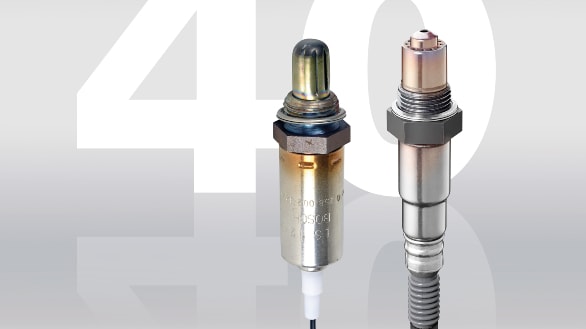
As mentioned earlier, the BSVI emission standards are very stringent and to get fossil fuel burning internal combustion engines to meet them, the manufacturers have had to come up with many hi-tech solutions. One of course is working on the engine itself. They have taken significant in-cylinder measures and come up with better designed and engineered fuel-injectors and combustion chambers which have helped improve the fuel injection, atomisation and combustion to reduce exhaust emission at the source itself. To increase overall efficiency in an engine, many manufacturers now have lighter and lower friction generating materials that can also tolerate much more extreme temperatures. All these are within engine emission control measures.
Then there is the after-treatment of exhaust and arresting of pollutants with the aim being to prevent them from being released into our environment. In recent years, we have seen a massive improvement in the exhaust after-treatment systems and they are actually the core components of BSVI compliant engines. Things like exhaust gas compressor, exhaust gas recirculation and various catalysts and filters like the all-important DPF (diesel particulate filter) that aid in removing or trapping the pollutants. Diesel engines, simply because of the nature of the fuel they burn, generate more pollutants including both NOx and PM (particulate matter) and thus need more advanced technology to meet the BSVI norms. The biggest change is in the exhaust gas after-treatment and the two technologies that are generally employed by a manufacturer are nitrogen oxide trap or LNT (Lean NOx Trap) and SCR (Selective Catalytic Reduction).
The LNT is kind of a catalyst with precious metals like platinum, rhodium and barium and these help in the adsorption of nitrogen oxides. Adsorption results in the adhesion of atoms, ions or molecules from a gas to a surface and thus contributes in neutralising the nitrogen oxides.
The SCR is also a catalyst, but a more active one. It sprays a water-based urea solution (trademark or marketing name AdBlue) into the exhaust gas flow. The AdBlue reacts chemically with the gases to neutralise nitrogen oxides and turns them into inert nitrogen and water. In this system there is a separate tank and refuelling nozzle to store and top up the AdBlue. The SCR system with the AdBlue is more efficient and can deal with higher volumes of nitrogen oxides. But the technology is also more expensive and needs regular refills of the AdBlue solution.
The government has of course laid down the BSVI limits and it's up to manufacturers to adopt the suitable technology to meet the regulatory requirements. Given this, we could find the more affordable LNT system being used in smaller vehicles with smaller diesel engines, but the more powerful and bigger vehicles will certainly need to have SCR.
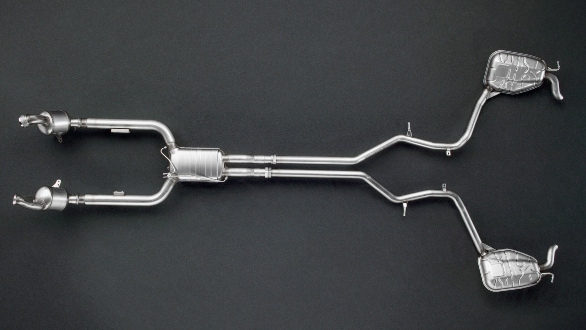 Effective emissions control: the catalytic converters and particulate filter work in tandem
Effective emissions control: the catalytic converters and particulate filter work in tandem
DPF (diesel particulate filter)
With the advent of BSVI, we are going to see a lot more of diesel particulate filters, as they are an integral part of the exhaust emission control system. Like the name suggests, this filter captures and stores exhaust particle emissions or soot particles, which are basically one of the more harmful byproducts of combustion. The DPF is designed to retain these solid particles until they can be continuously or periodically burnt or oxidised inside the DPF itself, through a process known as thermal regeneration. The DPF is expensive and effective as it uses a lot of ceramic materials due to their good thermal efficiency, which is needed in thermal regeneration. These cellular ceramic honeycomb type filters provide a large filtration area while minimising pressure losses. After trapping the particles, the thermal regeneration process burns all the soot deposited in the filter and prevents it from escaping into the atmosphere. That is why on a vehicle fitted with a DPF, one does not see the typical black smoke coming out of the exhaust pipe, especially under hard acceleration. The DPFs have a very high capturing capacity of almost 100 per cent and if you see any soot on the exhaust pipe, it indicates a blocked or failed filter.

Apart from the capturing capacity, the other highlight of a DPF is its thermal regeneration that incinerates the soot. This thermal regeneration happens automatically, particularly on long drives. When the vehicle is moving at a high speed for a reasonable amount of time, the exhaust temperature becomes high enough for effective thermal regeneration to happen. But what if a person does not drive at high speed or make long enough journeys for the exhaust temperature to reach the desired levels? In such a situation, the DPF which is not able to burn off the soot may also reach its soot storing capacity. When this predetermined storing point is reached, the ECU (Engine Control Unit) in most vehicles is programmed to intervene. It will automatically inject additional fuel into the exhaust system, to increase the temperature and initiate thermal regeneration.
Most cars come with warning lights telling you when a DPF is blocked and in need of regeneration. But as thermal regeneration is an automatic process, there are no indicator lights to show when it is happening. However if you are an alert driver clued into his car, you may detect the change in the note of engine and an acrid smell emanating from the exhaust, like something is being burnt in a furnace.
In our experience, we have had some problems driving on high altitude roads in India, with vehicles fitted with DPFs. But we are talking about driving with BSIV diesel and not BSVI. At altitudes below 10,000 feet, the vehicles with DPF had no problem with their performance. But as the height increased and there was a resultant drop in the oxygen levels, the DPFs tended to get choked very quickly, which resulted in the engine going into limp mode and limiting revs and speed to prevent any damage. So what about the BSVI compliant cars with DPFs running with BSVI fuel at high altitudes? Hopefully the manufactures have looked at this and tested their engines thoroughly. It's something we also plan on testing as soon as BSVI fuel is available in the higher reaches of Himachal and Ladakh.
AdBlue
As we have seen, to be BSVI compliant the more powerful engines and larger vehicles will need to use a SCR (Selective Catalytic Reduction) with an AdBlue system to achieve the desired emission levels. Basically a DEF (Diesel Exhaust Fluid) which is made up of about 70 per cent de-ionised water and 30 per cent urea is injected or sprayed onto the exhaust gases to assist breaking down the nitrogen oxides or NOx. The trademark name for this DEF is AdBlue. Some manufacturers also refer to it as an 'Emissions Additive' and when it is sprayed into a hot SCR, it releases ammonia, which acts as a catalyst for a chemical reaction in which dangerous nitrogen oxides are converted to harmless water vapour and nitrogen.
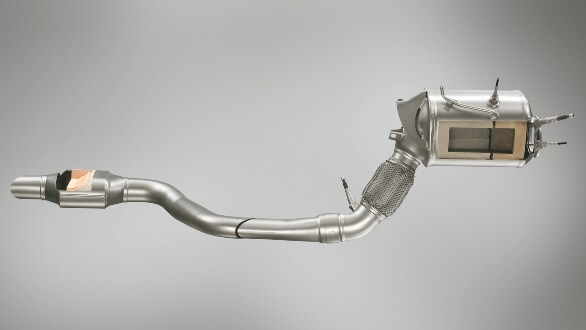
The diesel exhaust fluid or AdBlue, has a tank and filler of its own and normally the storage capacity of this tank is five to 15 litres and can be even more in larger vehicles. The AdBlue tank is generally located near the exhaust system because it needs to be sprayed into the SCR's catalyst. In many vehicles, the AdBlue fuel filler is also next to the regular diesel filler. Given this, now onwards vehicle owners will have to be very careful that diesel is not filled into the AdBlue filler and tank, and vice versa. And if by mistake you put AdBlue into the diesel tank or diesel into the AdBlue one, you should not attempt to start the car as it could cause serious damage to the engine or the SCR system. You will need to get the service guys to come drain the required tanks, clean the system, etc.
As AdBlue is regularly injected into the SCR, it will obviously also get consumed and the tank will need to be topped up. The consumption of AdBlue and refill requirements will vary depending on the vehicle and manufacturer, and your usage pattern and driving style and conditions. But typically, one tank full of AdBlue should last for about 10,000km. I presume many manufactures will top up the AdBlue whenever the vehicle goes for a service, but nevertheless, like the filling of fuel and lubricants is the responsibility of the car owner, now onwards they will also have to keep track of when the AdBlue needs a refill.
The per litre cost of DEF (Diesel Exhaust Fluid) or AdBlue is about `30 and I would suggest if you are doing a long journey, you keep a can of at least 5/10 litres with you, because availability in the far flung parts of our country may be bit of an issue, for the near future at least. If you are wondering what will happen if your vehicle runs out of AdBlue, from what I understand, you will first get a warning light or message in the dash. The level at which this warning comes on depends on the manufacturer, but it should certainly give enough time for you to get a refill. In case you continue driving despite the low AdBlue warning, and the vehicle runs out of the DEF, the ECU (Engine Control Unit) may restrict the revs and performance of the engine and go into a 'Limp Mode'. Sometimes also referred to as the limp-home mode, it is activated by the ECU when the car computer detects any issue that could cause damage to the vehicle or in case of the AdBlue, to the environment. In limp-home mode, the engine's revs and speed are cut down substantially, but you can still drive home or to the nearest workshop. But please do bear in mind that if the vehicle goes into limp mode because it has run out of Adblue and you switch off the engine, it may not restart without the Adblue tank being refilled again. This is because the BSVI law puts the onus on the manufacturer to ensure their vehicle meets the certified emission levels at all times. Without AdBlue it will not be able to meet the levels, so it is the manufacturer's responsibility to ensure that the vehicle is always driven with adequate Adblue. In any case I would strongly suggest that you also behave like a concerned and responsible citizen, and top up the AdBlue as and when required. Wishing you clean and safe motoring in 2020!
